
Automotive parts company LKQ (NASDAQ:LKQ) fell short of the markets revenue expectations in Q3 CY2025, with sales falling 2.4% year on year to $3.50 billion. Its non-GAAP profit of $0.84 per share was 11% above analysts’ consensus estimates.
Is now the time to buy LKQ? Find out by accessing our full research report, it’s free for active Edge members.
LKQ (LKQ) Q3 CY2025 Highlights:
- Revenue: $3.50 billion vs analyst estimates of $3.53 billion (2.4% year-on-year decline, 0.9% miss)
- Adjusted EPS: $0.84 vs analyst estimates of $0.76 (11% beat)
- Adjusted EBITDA: $381 million vs analyst estimates of $373.5 million (10.9% margin, 2% beat)
- Management lowered its full-year Adjusted EPS guidance to $3.08 at the midpoint, a 2.4% decrease
- EBITDA guidance for the full year is $794 million at the midpoint, below analyst estimates of $1.57 billion
- Operating Margin: 7.8%, in line with the same quarter last year
- Free Cash Flow Margin: 11.1%, up from 9.5% in the same quarter last year
- Organic Revenue fell 1% year on year vs analyst estimates of 2.6% declines (159 basis point beat)
- Market Capitalization: $7.73 billion
“Our solid results this quarter underscore our confidence in our strategy and the momentum we are building toward sustained value creation. We are deploying capital in alignment with our disciplined capital allocation strategy and in support of our multiyear transformation plan. Following the Self Service divestiture, we have reduced our debt by more than $600 million since the end of the second quarter, further fortifying our balance sheet to navigate a challenging macro environment and reinforce a solid foundation for future growth,” stated Rick Galloway, Senior Vice President and Chief Financial Officer.
Company Overview
A global distributor of vehicle parts and accessories, LKQ (NASDAQ:LKQ) offers its customers a comprehensive selection of high-quality, affordably priced automobile products.
Revenue Growth
A company’s long-term sales performance is one signal of its overall quality. Any business can put up a good quarter or two, but the best consistently grow over the long haul. Unfortunately, LKQ’s 3.6% annualized revenue growth over the last five years was sluggish. This was below our standard for the consumer discretionary sector and is a tough starting point for our analysis.
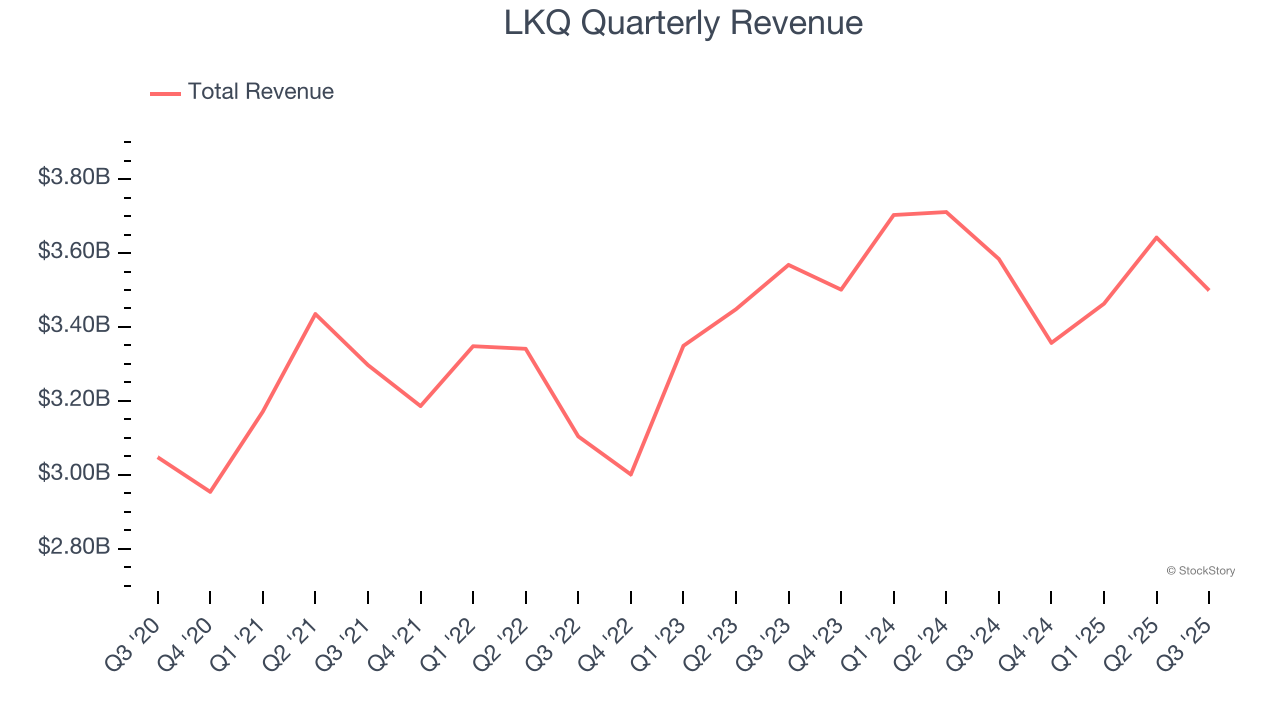
We at StockStory place the most emphasis on long-term growth, but within consumer discretionary, a stretched historical view may miss a company riding a successful new product or trend. LKQ’s recent performance shows its demand has slowed as its annualized revenue growth of 2.2% over the last two years was below its five-year trend. 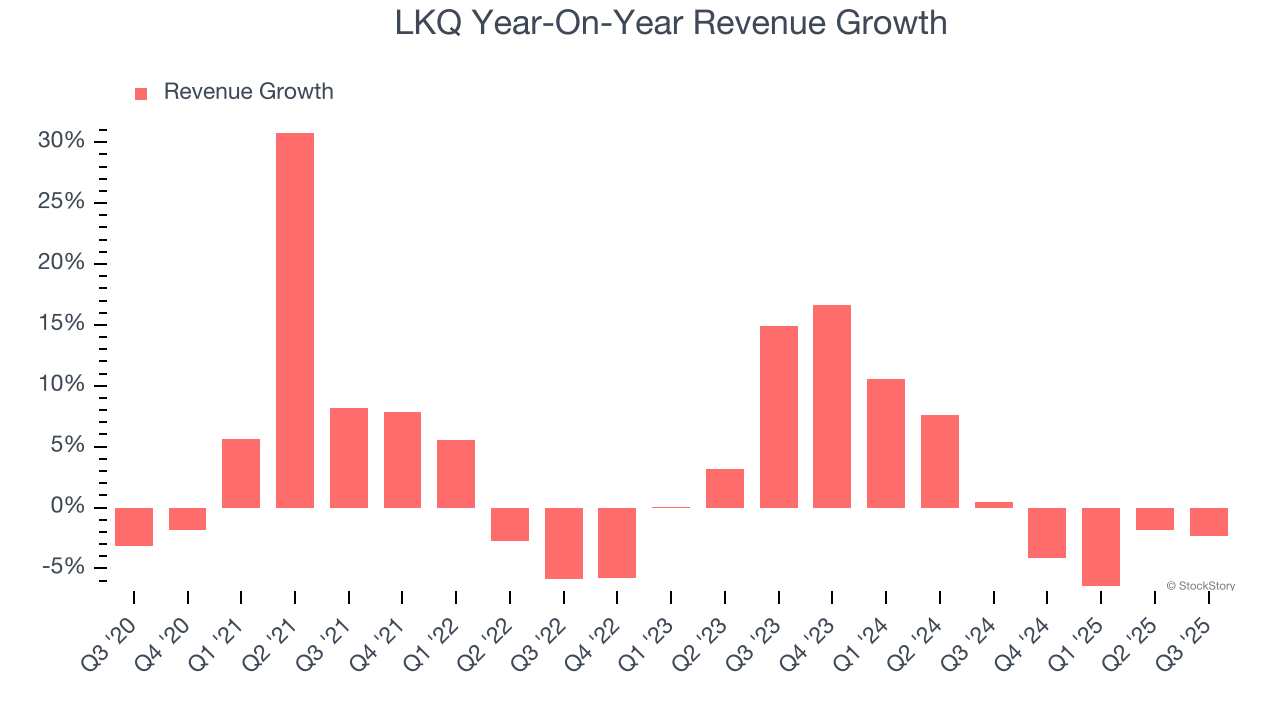
We can better understand the company’s sales dynamics by analyzing its organic revenue, which strips out one-time events like acquisitions and currency fluctuations that don’t accurately reflect its fundamentals. Over the last two years, LKQ’s organic revenue averaged 2.1% year-on-year declines. Because this number is lower than its two-year revenue growth, we can see that some mixture of acquisitions and foreign exchange rates boosted its headline results. 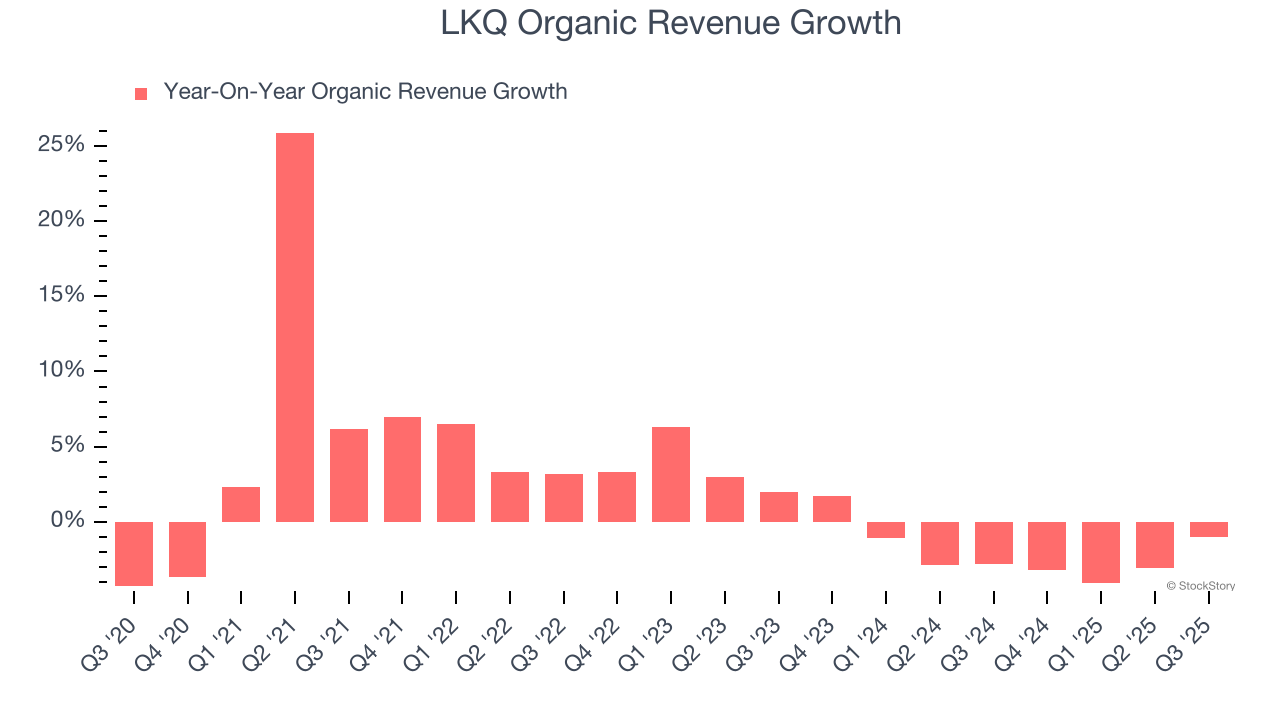
This quarter, LKQ missed Wall Street’s estimates and reported a rather uninspiring 2.4% year-on-year revenue decline, generating $3.50 billion of revenue.
Looking ahead, sell-side analysts expect revenue to grow 2.5% over the next 12 months, similar to its two-year rate. This projection is underwhelming and implies its newer products and services will not accelerate its top-line performance yet.
Software is eating the world and there is virtually no industry left that has been untouched by it. That drives increasing demand for tools helping software developers do their jobs, whether it be monitoring critical cloud infrastructure, integrating audio and video functionality, or ensuring smooth content streaming. Click here to access a free report on our 3 favorite stocks to play this generational megatrend.
Operating Margin
LKQ’s operating margin might fluctuated slightly over the last 12 months but has generally stayed the same, averaging 8.3% over the last two years. This profitability was mediocre for a consumer discretionary business and caused by its suboptimal cost structure.
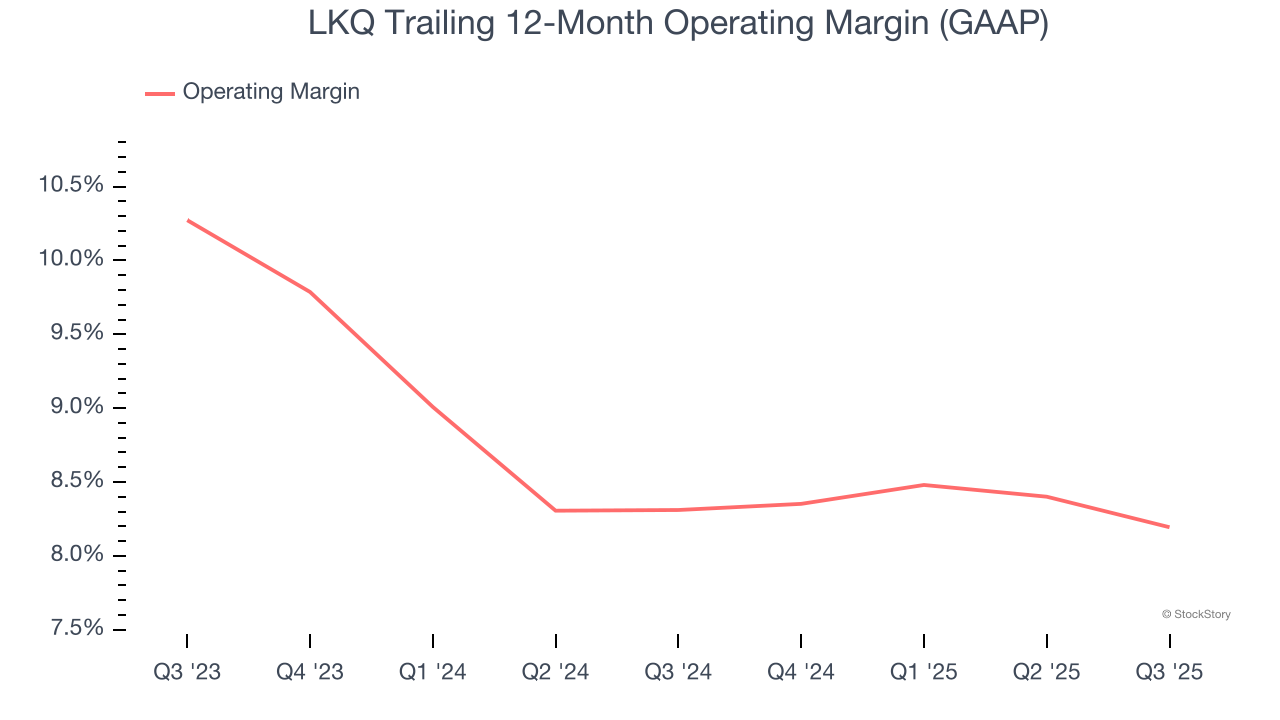
This quarter, LKQ generated an operating margin profit margin of 7.8%, in line with the same quarter last year. This indicates the company’s overall cost structure has been relatively stable.
Earnings Per Share
We track the long-term change in earnings per share (EPS) for the same reason as long-term revenue growth. Compared to revenue, however, EPS highlights whether a company’s growth is profitable.
LKQ’s EPS grew at an unimpressive 6.7% compounded annual growth rate over the last five years. This performance was better than its flat revenue but doesn’t tell us much about its business quality because its operating margin didn’t improve.
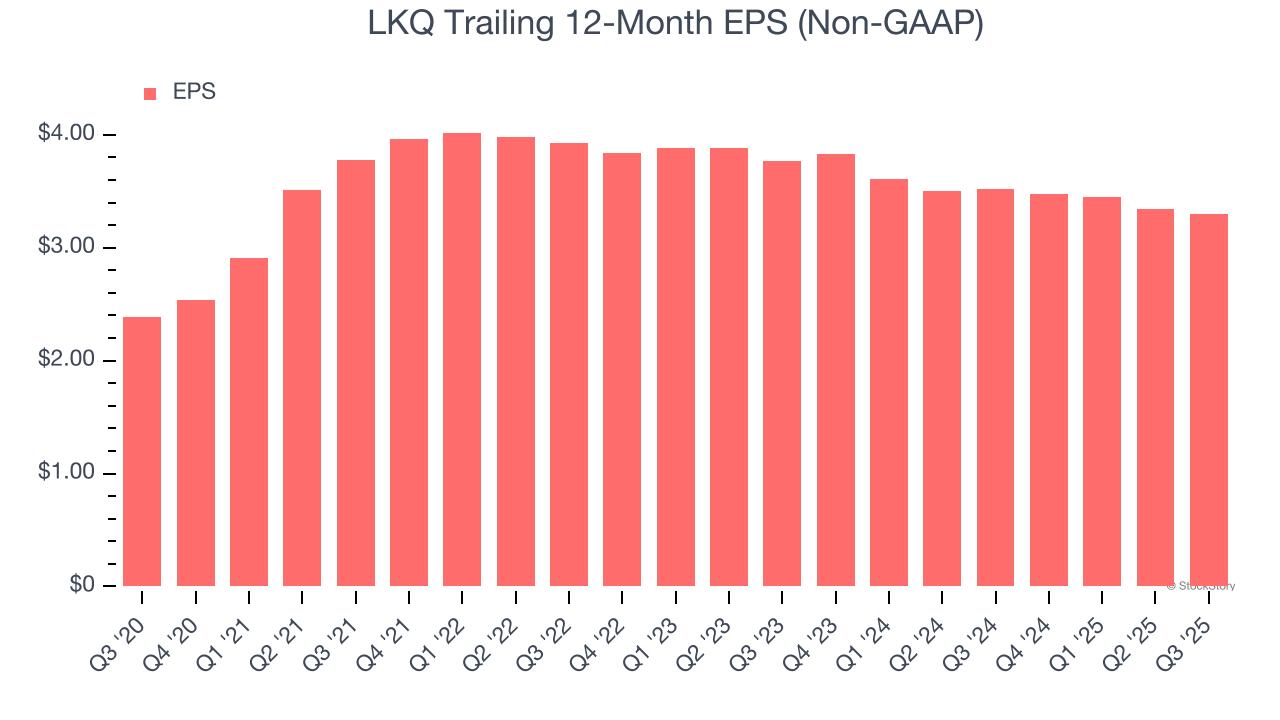
In Q3, LKQ reported adjusted EPS of $0.84, down from $0.88 in the same quarter last year. Despite falling year on year, this print easily cleared analysts’ estimates. Over the next 12 months, Wall Street expects LKQ’s full-year EPS of $3.30 to stay about the same.
Key Takeaways from LKQ’s Q3 Results
We enjoyed seeing LKQ beat analysts’ organic revenue expectations this quarter. We were also glad its EPS outperformed Wall Street’s estimates. On the other hand, its full-year EBITDA guidance missed and its revenue fell slightly short of Wall Street’s estimates. Overall, this quarter was mixed. Still, the stock traded up 3.5% to $31.10 immediately after reporting.
Is LKQ an attractive investment opportunity at the current price? We think that the latest quarter is only one piece of the longer-term business quality puzzle. Quality, when combined with valuation, can help determine if the stock is a buy. We cover that in our actionable full research report which you can read here, it’s free for active Edge members.
